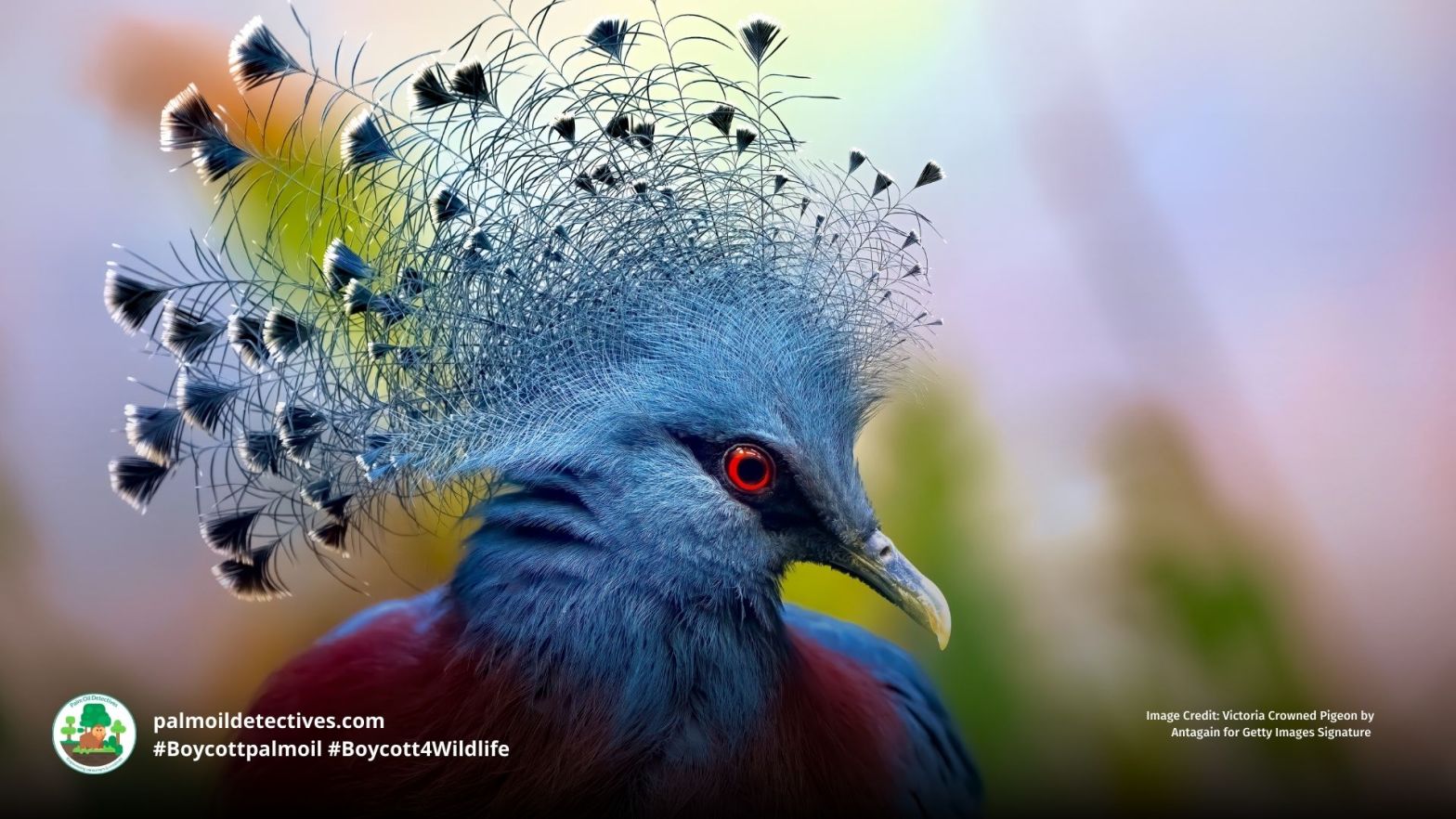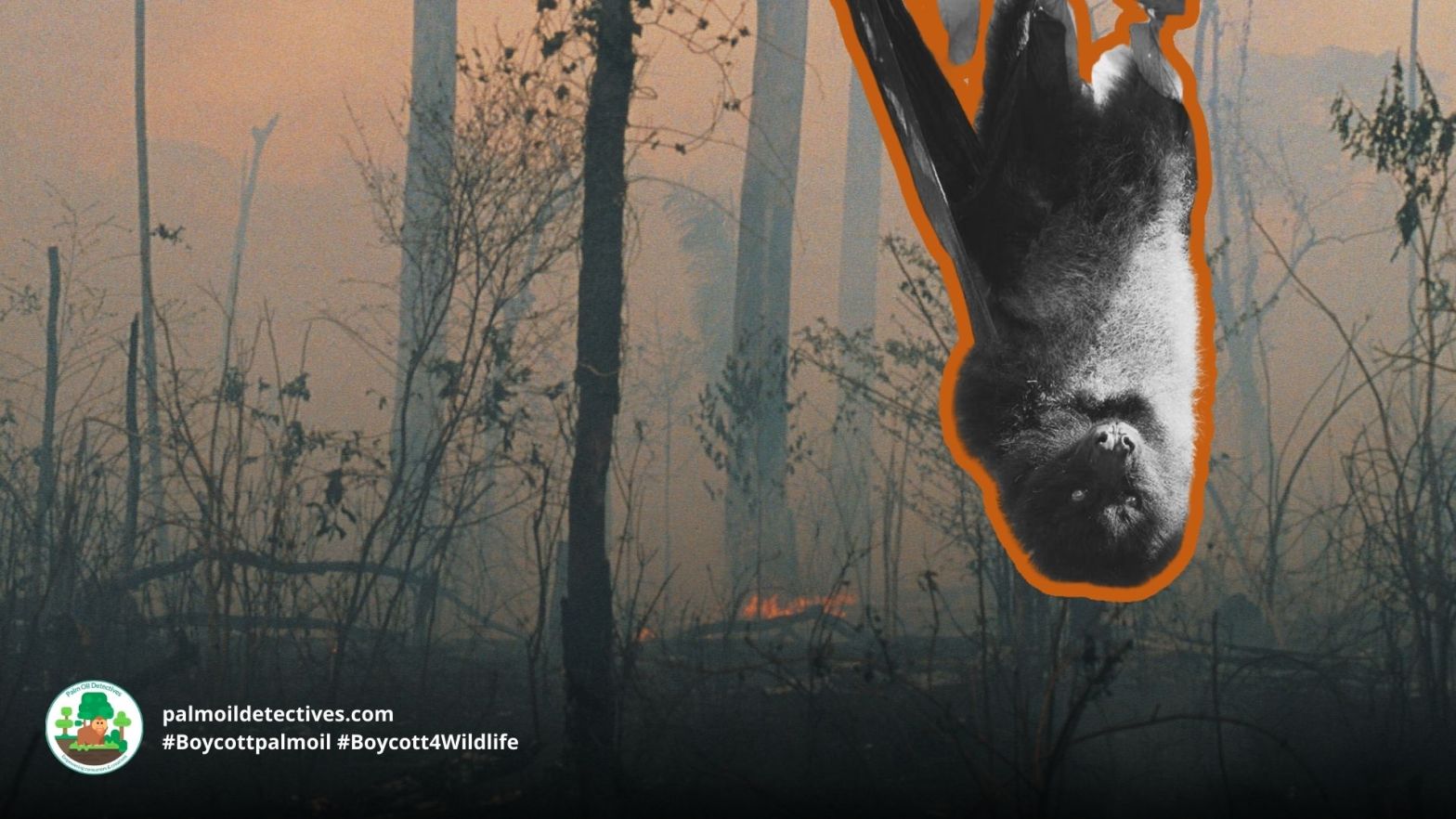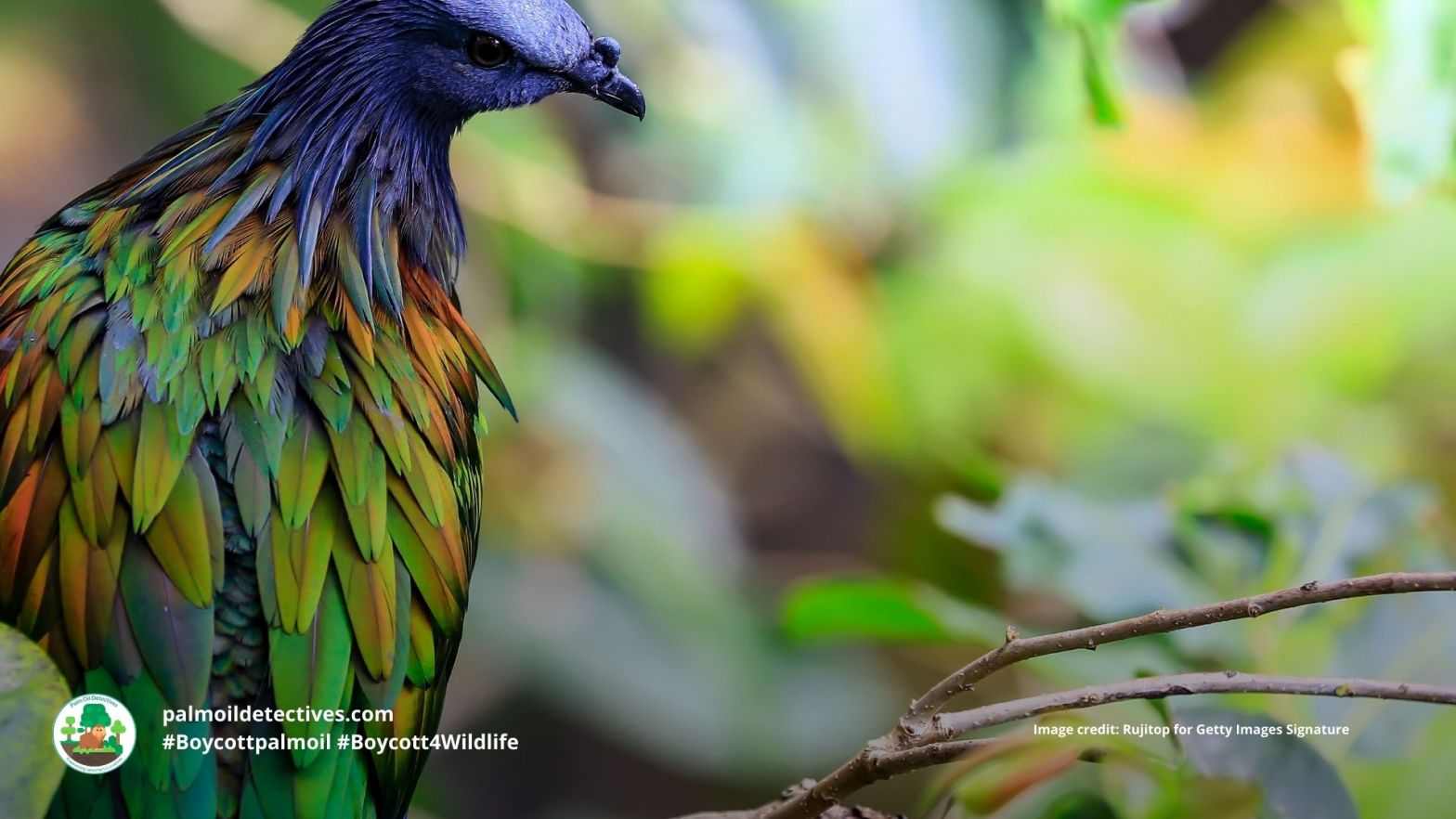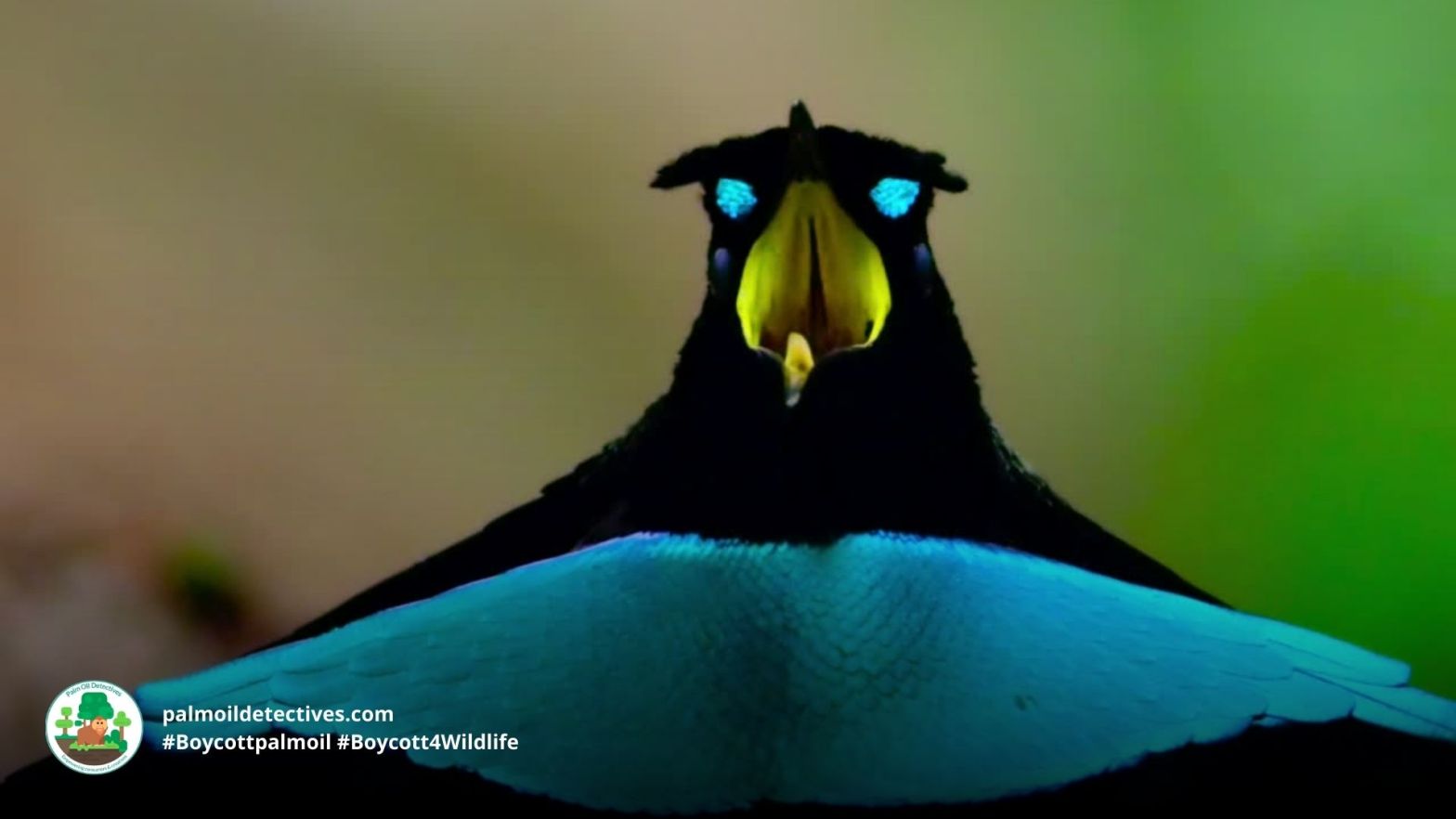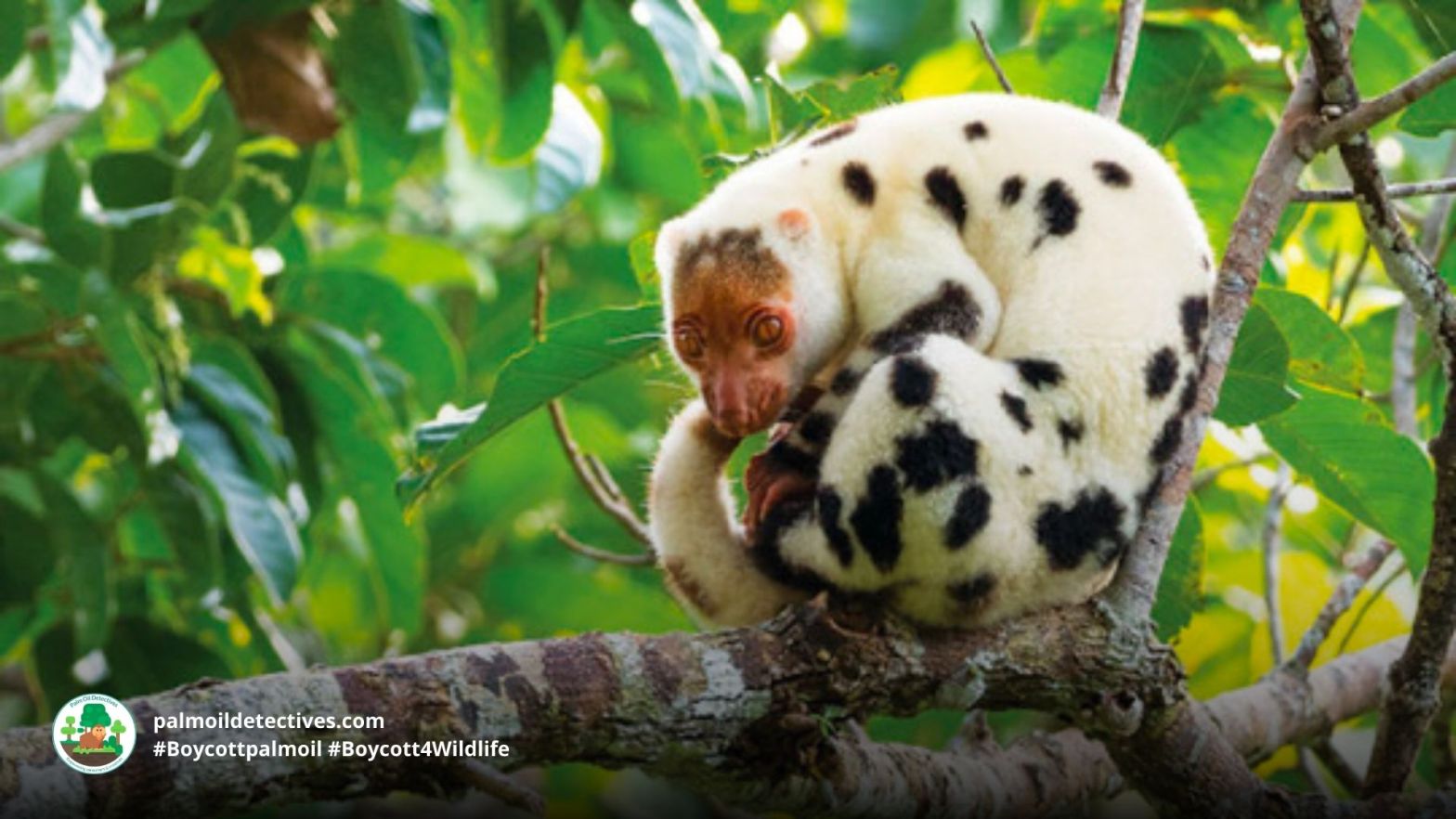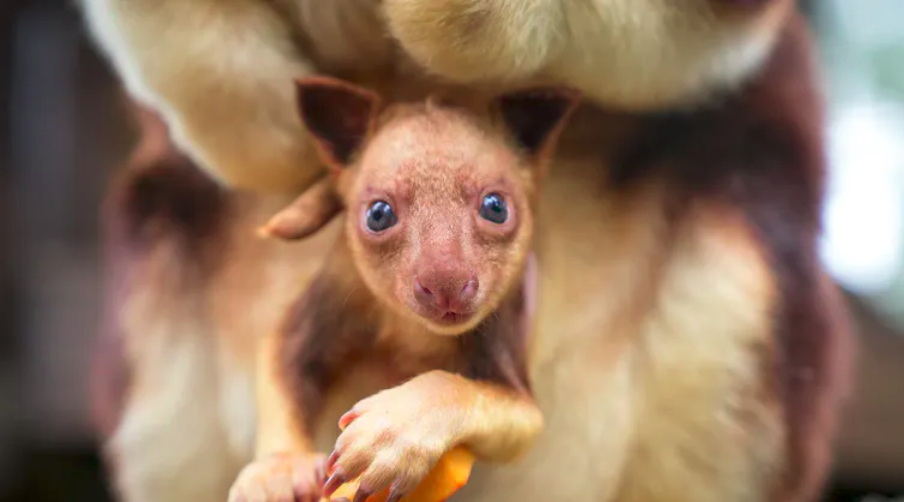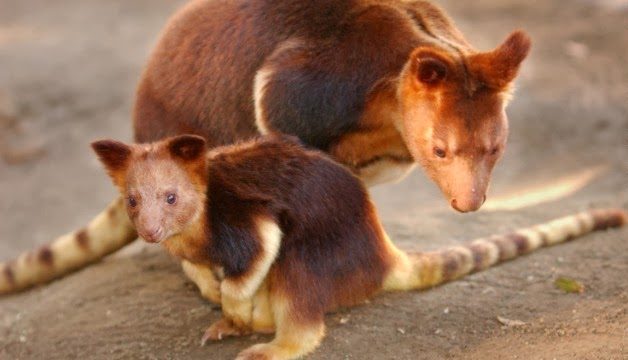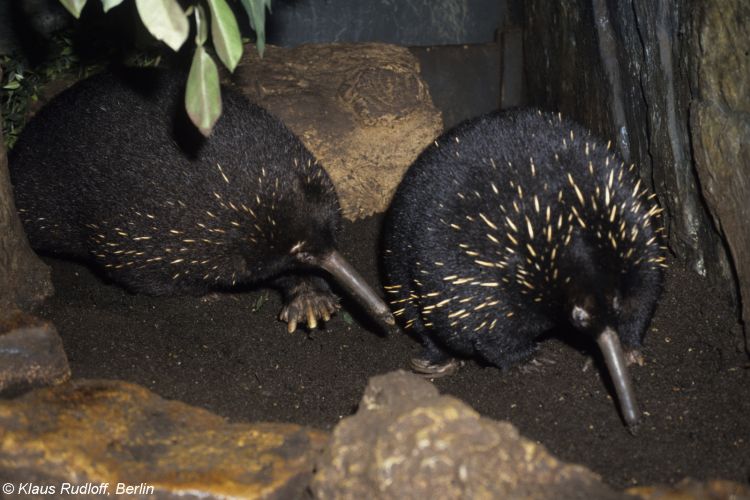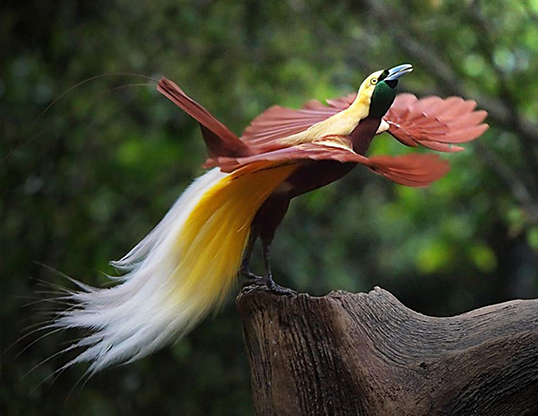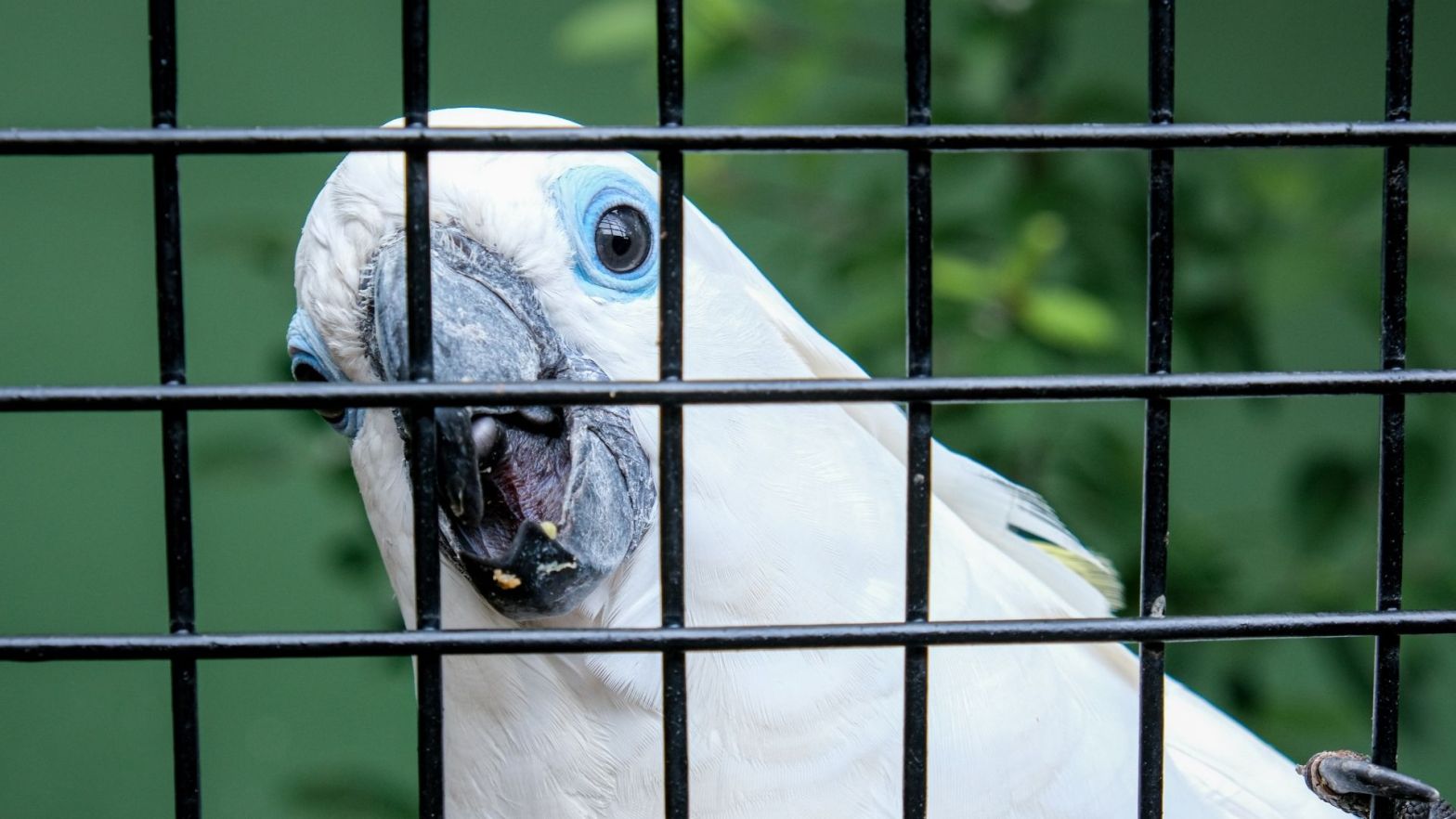Meet the Victoria crowned pigeon, the world’s largest pigeon species with royal roots and some unique quirks. Not only are they named after Queen Victoria, but they’re also close relatives to the extinct dodo. These lovebirds mate for life and share parenting duties in the most adorable ways—from dancing displays to feeding their chicks a special ‘crop milk.’ Despite their fascinating traits and tight-knit families, these majestic birds face dire threats. Their forest homes are disappearing due to palm oil and timber deforestation, and they’re being hunted. Help keep their love story alive: #BoycottPalmOil and support #Boycott4Wildlife to protect these incredible creatures.
Tag Archives: Papua New Guinea: Species Endangered by Palm Oil Deforestation
Bougainville Monkey-faced Bat Pteralopex anceps
In the verdant, high-altitude forests of Bougainville Island, Papua New Guinea, and Choiseul Island, Solomon Islands, lives an intriguing creature—the Bougainville Monkey-faced bat or, as some call them, the Bougainville Flying Monkey. These bats are the titans of their family, boasting arm spans stretching impressively between 14.1 to 16 cm. They are endangered, mostly from palm oil and mining deforestation and hunting. Help them to survive every time you shop and #Boycottpalmoil #Boycott4Wildlife
Nicobar pigeon Caloenas nicobarica
The Nicobar pigeon is the largest pigeon in the world and the closest living relative to the extinct dodo bird. They are famous for their gorgeous iridescent feathers. When threatened they make a pig-like grunt and are known for the strange way that they drink – by dunking their heads into water and sucking it up instead of sipping as other birds do. They are Near Threatened from palm oil deforestation on the Nicobar and Andaman Islands in #India along with hunting and the pet trade. Help their survival and #Boycottpalmoil #Boycott4Wildlife in the supermarket.
Vogelkop Superb Bird of Paradise Lophorina superba
Male superb-bird’s-of-paradise are the dramatic actors of New Guinea’s rainforest. They use their lush, multicoloured plumage to change shape in an elaborate dancing courtship display that typically goes on for many hours for the sole benefit of a female bird. At the end of the dancing ritual, the female will get to choose her mate between 15-20 male birds. These magnificent birds are struggling to survive, hemmed in on all sides by hunting, palm oil, mining and timber deforestation throughout their range. Help their survival every time you shop and #Boycottpalmoil #Boycott4Wildlife in the supermarket!
Waigeo Cuscus Spilocuscus papuensis
Cryptic and solitary marsupials, Waigeo Cuscuses cling to tree canopies on a Waigeo Island, West Papua. They are classified as vulnerable on IUCN Red List due to palm oil deforestation and mining on the tiny island where they live. Help them each time you shop and be #vegan, #Boycottpalmoil and #Boycott4Wildlife
New Guinea Singing Dog Canis hallstromi
Thought for decades to be extinct in the wild, the New Guinea singing dog populations hang on to survival in the remote mountains and forests of New Guinea. They were last spotted in 2017 near the Grasberg gold and copper mine in West Papua.
Elusive and likely now critically endangered, New Guinea Singing Dogs are rapidly disappearing and have no formal protection or conservation in place. Help them survive and fight against #palmoil #deforestation in #WestPapua, #Boycottpalmoil #Boycott4Wildlife
Meet Chimbu, the blue-eyed, bear-eared tree kangaroo
Tree kangaroos are so unusual that when Europeans first encountered them in Australia in 1872, they were sceptical. Who would believe a kangaroo could climb a tree? The Goodfellow’s tree kangaroo is a threatened species found in forests in the Central Cordillera mountain ranges of Papua New Guinea, from sea level to high in theContinue reading “Meet Chimbu, the blue-eyed, bear-eared tree kangaroo”
Vordermann’s Flying Squirrel Petinomys vordermanni
Vordermann’s Flying Squirrel Petinomys vordermanni Vulnerable Malaysia, Brunei, Borneo The world’s gliding mammals are an extraordinary group of animals that have the ability to glide from tree to tree with seemingly effortless grace. There are more than 60 species of gliding mammals including the flying squirrels from Europe and North America, the scaly-tailed flying squirrels from central Africa and the glidingContinue reading “Vordermann’s Flying Squirrel Petinomys vordermanni”
Northern Glider Petaurus abidi
Northern Glider Petaurus abidi Critically Endangered Papua New Guinea The Northern Glider is known only from Mount Somoro, and adjacent areas, in the Torricelli Mountains of north-western Papua New Guinea. This species has been found in primary, mid-montane tropical moist forests. It is also known from rural gardens close to forest (Flannery 1995). The NorthernContinue reading “Northern Glider Petaurus abidi”
Seri’s Tree Kangaroo Dendrolagus stellarum
Seri’s Tree Kangaroo Dendrolagus stellarum Vulnerable Location: Papua New Guinea; West Papua The Seri’s Tree Kangaroo is a large tree kangaroo that needs primary upper montane tropical forests. This species is threatened by heavy hunting pressure, this includes hunting with dogs (trophy jaws were still very much in evidence in 2000; T. Flannery pers. comm.Continue reading “Seri’s Tree Kangaroo Dendrolagus stellarum”
Doria’s Tree Kangaroo Dendrolagus dorianus
Doria’s Tree Kangaroo Dendrolagus dorianus Vulnerable Location: Papua New Guinea The Doria’s Tree Kangaroo is restricted to mossy mid to upper primary montane tropical forest. This species is threatened by heavy hunting for food with dogs by local people. Increased hunting pressure is probably due to improved road access associated with the Papua New GuineaContinue reading “Doria’s Tree Kangaroo Dendrolagus dorianus”
New Britain Sparrowhawk Accipiter brachyurus
New Britain Sparrowhawk Accipiter brachyurus Vulnerable Location: Papua New Guinea The New Britain Sparrowhawk is a very poorly-known forest species. Although there are some lowland records (Coates 1985, K. D. Bishop in litt. 1987, I. Burrows in litt. 1994, J. Diamond in litt.1999), most records are from montane forest to 1,800 m (Buchanan et al.Continue reading “New Britain Sparrowhawk Accipiter brachyurus”
Lowlands Tree Kangaroo Dendrolagus spadix
Lowlands Tree Kangaroo Dendrolagus spadix Vulnerable Location: Papua New Guinea The Lowlands Tree Kangaroo is found in lowland tropical forests where they are associated with karst habitats. Little more is known about the natural history of this species. The Lowlands Tree Kangaroo is hunted for food locally, but this may not have been a significantContinue reading “Lowlands Tree Kangaroo Dendrolagus spadix”
Eastern Long-beaked Echidna Zaglossus bartoni
Eastern Long-beaked Echidna Zaglossus bartoni Vulnerable Location: Papua New Guinea The Eastern Long-beaked Echidna have a large altitudinal range and correspondingly broad ecological scope. Across their entire range they have been recorded from near sea level to 4150 metres a.s.l., although regionally their altitudinal range may be more restricted. This echnidna species lives in lowlandContinue reading “Eastern Long-beaked Echidna Zaglossus bartoni”
Blue Bird-of-paradise Paradisornis rudolphi
Blue Bird-of-paradise Paradisornis rudolphi Vulnerable Location: Papua New Guinea The Blue Bird-of-paradise occurs in lower montane forest, mainly at 1,400-1,800 m, but occasionally from 1,100 to 2,000 m , especially female-plumaged birds. Although displaying males usually use patches of primary forest, they have also been reported singing in the highly populous Tari valley, in areasContinue reading “Blue Bird-of-paradise Paradisornis rudolphi”
Goldie’s Bird-of-paradise Paradisaea decora
Goldie’s Bird-of-paradise Paradisaea decora Vulnerable Location: Papua New Guinea The Goldie’s Bird-of-Paradise lives in forest between 300 m and at least 750 m, occasionally down to near the coast (Beehler and Pratt 2016). They appear to inhabit secondary regrowth and forest edge, suggesting some tolerance of logging (Coates 1990, Frith and Beehler 1998). These birdsContinue reading “Goldie’s Bird-of-paradise Paradisaea decora”
Imitator Goshawk Accipiter imitator
The Imitator Goshawk Accipiter imitator is a shrewd raptor vulnerable in Papua New Guinea and Solomon Islands due to human-related threats. They are threatened from human persecution, palm oil deforestation and mining. Help them every time you shop and use your wallet as a weapon, #Boycottpalmoil #Boycott4Wildlife
Grizzled Tree Kangaroo Dendrolagus inustus
Curious, gentle tree-dwelling macropods, Grizzled Tree kangaroos live in the lowland and mid-montane tropical forests of Papua New Guinea. They are found in both primary and degraded forests. The Grizzled Tree Kangaroo is threatened by heavy hunting for food by local people, and by habitat loss and degradation through conversion of forest to small-scale agricultural use, and industrial palm oil plantations.
Blue-eyed Cockatoo Cacatua ophthalmica
Rapid conversion of lowland forest to oil plantations over the last thirty years is likely to have caused a significant loss of breeding habitat to the Blue-Eyed Cockatoo. The major oil palm companies have committed to no further forest clearance but there is a risk that smaller companies will clear forest for oil palm.
Fearful Owl Nesasio solomonensis
Fearful Owl Nesasio solomonensis Vulnerable Location: Papua New Guinea, Australia The Fearful Owl is a large owl and an apex predator in Papua New Guinea along with the Sanford’s Fish-eagle Haliaeetus sanfordi. They feed mostly on northern common cuscus Phalanger orientalis (Diamond 1975a, Webb 1992). Cuscus were introduced to these islands in prehistoric times; presumablyContinue reading “Fearful Owl Nesasio solomonensis”

